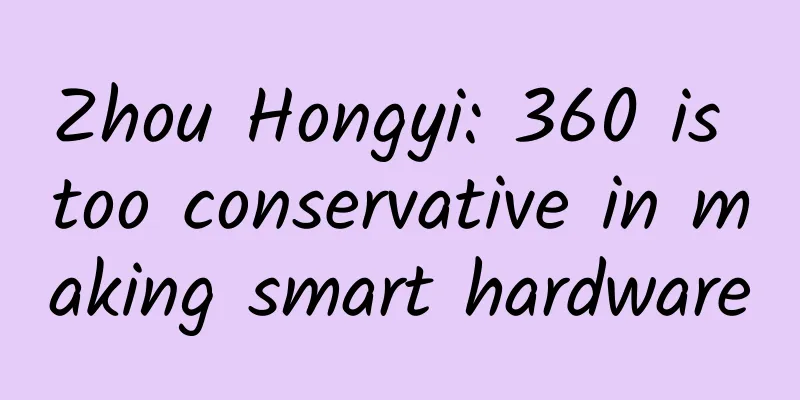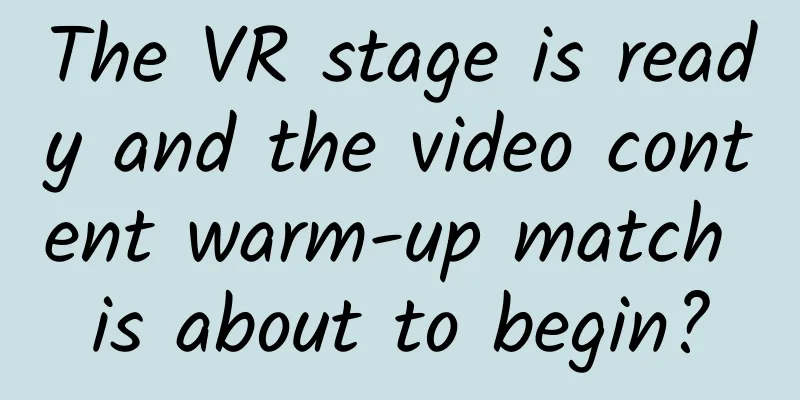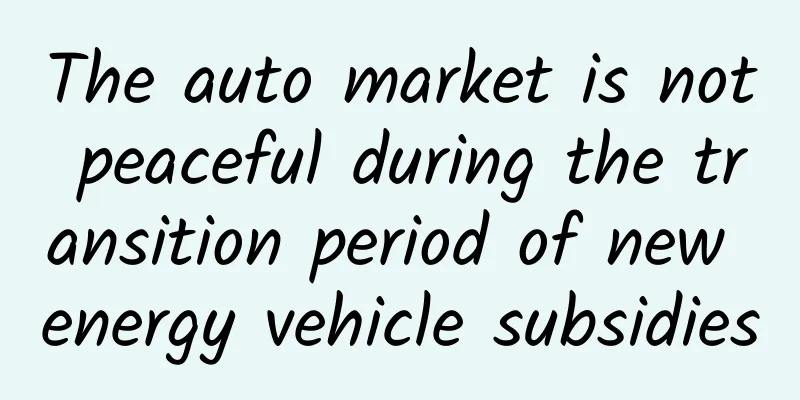Looking at Western science fiction from the popular American TV series "Westworld": the evolution of human view on science and technology

|
The hit TV series "Westworld" has been announced to be renewed for its second season. The most common comment about this film is that it "combines imaginative advanced technology with the wild Western culture." In fact, many science fiction fans know that this combination of brain-opening technology and the wild west has been tried and tested since it appeared decades ago. In the era when science fiction works were not yet adapted into movies and TV series, some writers had cowboys in the west use steam-powered mechanical arms to fight bandits who mastered black magic, and later cowboys drove spaceships to be bounty hunters in space, and then to the artificial intelligence and biotechnology in today's "Westworld". It is most appropriate to describe it as "flowing science fiction elements, and iron-clad western background". Such "Western science fiction" works can be divided into two eras: the magic era and the post-magic era. 【The Magic Age of Western Science Fiction】 Western sci-fi works in the magic age can be regarded as the origin of this genre, although Western sci-fi at that time was just a small branch of steampunk. As for the meaning of steampunk, I will not elaborate here. Simply put, in this sci-fi genre, steam is still the main power source, and all technologies related to electricity do not exist. More importantly, magic and science coexist in its worldview. Because of the existence of magic and technology, the element of adventure has become an indispensable part of steampunk novels, so the background is often set in a small town harassed by a dragon in the Victorian era, or a fleet ordered to explore the unknown in the Age of Discovery. Of course, the mysterious and wild American West is also one of them - cowboys carry large and small instruments and compasses on their arms, and their mount may be a steam-powered mechanical horse. This type of steampunk novel with a western background belonged to a genre called "Weird West" at the time, represented by the Western Lights series by Jeffrey E. Barlough. However, few works of the Weird Western genre have been adapted into films and TV series, perhaps because steampunk-style science fiction works have been replaced by more technologically advanced cyberpunk after entering the 1950s. The most typical Weird Western film and TV series we can see now is Wild Wild West from the 1960s, which tells the story of a strange doctor driving a mechanical spider around, while a cowboy-like agent and a scientist-like disguise master ride a luxury steam train to hunt him down. In addition to film and television works, some games also choose weird Western as their theme, such as "Sakura Wars 5" and "Black Gold". However, it was not until the post-magic era that Western science fiction became popular. [Magic disappears, and only cruelty remains in Western sci-fi? ] Changes occur as technology becomes more advanced and more popular. When people gain a deeper and more detailed understanding of technology, they are disappointed to find that technology is just technology and has nothing to do with magic, which symbolizes supernatural powers. As a result, people's presentation of technological factors in science fiction works has become increasingly large and detailed, such as setting the entire story background in space, using starships, laser weapons, augmented reality interactive glasses and other devices that mix a lot of real-world technologies. It has to be said that after removing the magic elements, science fiction films have become more and more realistic. Western science fiction in the post-magic era can be roughly divided into two types. One is to integrate science fiction elements into the real Western background, such as "Cowboys vs. Aliens" and "Westworld". The images of deserts and cowboy hats still exist, but a lot of science fiction elements such as aliens, artificial intelligence and biotechnology have been integrated. The other is to integrate Western elements into the science fiction background, such as the Japanese animation "Cowboy Bebop" and the American TV series "Firefly". The protagonists no longer live in the West (even the earth no longer exists), most of them wander in space or even other dimensions, living a free life like cowboys. In the magic era, weird western works usually convey an optimistic tendency. Mechanical cowboys defeated black wizards, and the adventure team took trains with beautiful women to adventure around. But in the post-magic era, after the magic is stripped away, people always seem to emphasize the bad consequences of technology. For example, aliens who come to avenge the simple folks in the West because Area 51 imprisoned their accomplices, or the planets in "Cowboy Bebop" that fell into chaos due to phase gate explosions. One of the main reasons why "Westworld" is praised to such a high level is that we feel sincere fear about the awakening of artificial intelligence in it. (In "The Martian" starring Matt Damon, the environment on Mars is very similar to the desert in the western United States) [Why is the Western more compatible with science fiction? 】 After the end of the steampunk era, themes such as sailing and castles have gradually faded in science fiction works and turned to fantasy. It seems that only western science fiction continues to be promoted in the cyberpunk era when magic has disappeared. To put it simply, the western background is indeed the most consistent with science fiction elements apart from the fictional and realistic ones. First, the environment in the west is desolate, desert, sparsely populated, and the landform is a bit similar to Mars. This sense of apocalypse is very consistent with people's imagination of the world after it is destroyed by technology, and also conforms to people's desire to explore the universe. Second, the breaking of geopolitical relations under the background of western colonization, the weak human relationships in troubled times and the interpersonal relationships reconstructed by social networks today coincide with each other. In science fiction works, human social interaction and even emotions have been weakened in the future. The third is the sense of conflict, which represents the conflict between the colonists of advanced civilization and the local indigenous peoples of the West. In fact, it is a conflict caused by technology. The colonists have weapons and technologies that the indigenous people have never heard of, and the indigenous people have no power to fight back against the colonists' plunder and enslavement of their resources. In "Westworld", the conflict between humans and artificial intelligence is typical. This includes robots, animals and even the earth itself that disagree and fight because they can't stand human oppression in all science fiction works. People's emotions about conflicts in Western science fiction are very complicated. Sometimes we feel like colonists and feel ashamed for using technology to oppress other species and even machines; sometimes we feel like natives, living under the control of technology and being plundered of resources by technology. Fourth, the supernatural elements are indispensable in the western background. Yes, even in the post-magic era, people still add supernatural elements to western science fiction films. Of course, its manifestation will never be magic, and its power has become more fragile. Many works even just explore whether supernatural elements exist. For example, the poison vine water of the natives of the West (made from hallucinogenic plants, it is said that after taking it, you will see supernatural phenomena in hallucinations) has appeared in many science fiction works. When the protagonist cannot achieve the goal with technology, he often tries this method to find the direction. In "Cowboy Bebop", there are also often images of fortune tellers. This is undoubtedly a reflection of the fragile spiritual world of people in the technological age. Perhaps when we are surrounded by too many technological products that are more powerful than ourselves, we subconsciously hope that there will be a force beyond technology that can restrain it. [From romantic to twisted, what kind of view on technology does western science fiction reflect? ] The transition from the magic age to the post-magic age reflects the change in people's views on technology. In the weird western novels of the magic age, technology is often the weapon of the righteous protagonist to defeat the villains who master black magic. The reason is probably that in that era, we experienced more of the liberation of productivity and the increase in the comfort of life brought by technology: electric lights, cars, machine factories and flush toilets. Of course, technology was also in the hands of a few people at that time - the richer and literate people. It is no wonder that the western science fiction works at that time were all about the romance of cowboy adventures. In the post-magic era, our feelings towards technology have become contradictory, sometimes we reflect on it, sometimes we are pleased with it, and sometimes we are afraid of it. Technology is not only used for justice, we are more likely to explore the dark side of technology. This is indeed because we have begun to taste the bitter fruits of technological development, such as environmental pollution and the squeeze on employment. What is more frightening is that when technology surpasses a steam machine manually operated by humans, its more powerful power, greater autonomy and uncontrollability make us begin to worry: what if one day humans can no longer control technology? So we began to seek support from religion and supernatural forces, eager to use more indescribable things to control the uncontrollable, and these are what we once broke with technology. Unfortunately, there is no going back. All we can do is wear the Spurs and talk about our confusion over and over again in the western sandstorm. As a winner of Toutiao's Qingyun Plan and Baijiahao's Bai+ Plan, the 2019 Baidu Digital Author of the Year, the Baijiahao's Most Popular Author in the Technology Field, the 2019 Sogou Technology and Culture Author, and the 2021 Baijiahao Quarterly Influential Creator, he has won many awards, including the 2013 Sohu Best Industry Media Person, the 2015 China New Media Entrepreneurship Competition Beijing Third Place, the 2015 Guangmang Experience Award, the 2015 China New Media Entrepreneurship Competition Finals Third Place, and the 2018 Baidu Dynamic Annual Powerful Celebrity. |
>>: Continental eHorizon technology adds traffic light assistance function
Recommend
Hisense's Liu Hongxin: Never rejected OLED, but more optimistic about laser display technology
Yesterday, we published the article "30,000 ...
How to create a WeChat vegetable selling app in Guangzhou? How to sell vegetables through WeChat mini program?
Today's industries are diverse, and many new ...
Why did Apple's 3D Touch technology end in failure?
On September 21, why did Apple's 3D Touch fea...
In-depth analysis | How did the 400 million yuan worth of advertising and content of "The Debaters" come together so perfectly?
There is a variety show that inserts advertisemen...
Quzhou Mini Program Production Company, how much does it cost to produce a food delivery mini program?
Mini programs provide convenience for publicity a...
Tractica: Global deep learning software market will reach $67.2 billion in 2025
Deep learning is a buzzword that has received muc...
2021 CPA Money-Making Project Training Camp, where beginners can earn 200-1000 yuan per day
2021 Hand-in-hand teaching you how to play the CP...
Still worried about promotion? Here is a list of promotion channels for your reference
For operations , user volume and revenue are the ...
Sohu Video is no longer conservative after increasing investment in the first platform for high-quality online dramas
The battle for copyrights among video websites is...
Marketing promotion program skills and planning methodology
I have heard many of my friends and colleagues ta...
What should the elderly pay attention to after their test results turn from positive to negative?
Under the epidemic, the elderly are one of the ke...
After reading 300 fission cases, I want to share with you the traffic acquisition thinking
This article will help you change your taste. It ...
Can mosquitoes be completely eliminated?
Recently, the National People's Congress repr...
Be careful! You can also get gout if you don’t eat seafood or drink alcohol! Just because... you also have these habits
According to Hangzhou Daily, the Rheumatology and...









